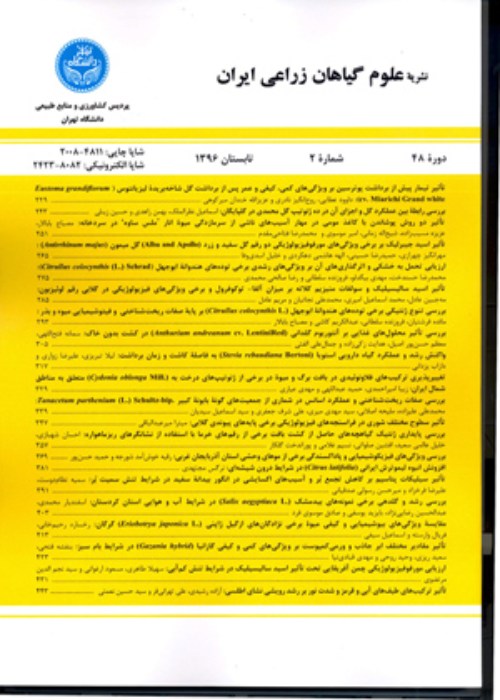Effect of Source-Sink Reduction on Grain Weight at Different Positions within the Spike and Spikelet
Abstract:
Studies on manipulating the source-sink relationships during postanthesis in wheat have shown inconsistent results, concluding that wheat yield could be either sink- or source-limited. Most studies have reported data of grain mass as an average of all grains preventing the recognition of different sensitivities to the availability of assimilates of grains placed at different positions within the spike. The response in growth and final mass of grains from the base, middle and apical part of spike along with the response in weight of individual grains from different positions within the central spikelets to decreases in assimilate availability was studied by moderating source-sink relationships during the grain growth period of wheat. Pot experiment was carried out, under natural conditions in the greenhouse areas of the College of Agriculture, University of Tehran, Karaj, in 2007-08 cropping season. Treatments consisted of 7 cultivars of bread wheat (new and old cultivars from moderate, cold and warm climates of Iran) and 7 defoliation treatments carried out at late joining stage and 20 days after anthesis. Treatments were arranged in 3-replicated factorial combination based on an RCBD design. In general, significant decrease of the peduncle weight was observed in defoliation treatments as compared with the control plants. In other words, decrease in the source strength through defoliation resulted in more consumption of water-soluble carbohydrates stored in the stem through kernels. On average in all cultivars, defoliation decreased grain mass in the base, middle and apical parts of the spike, of which the response of the apical part was more significant. Regarding the effect of defoliation on the weight of grains placed at different positions within the spike and individual grain weight in various positions of central spikelets, there was no obvious difference observed among cultivars. In old cultivars, defoliation did not affect grain weight at any spike position whereas, in the new ones, grain from some parts, particularly apical parts, was affected by defoliation. Significant decrease in individual grain weight was observed only for G3-positioned grains at severe defoliation treatments, but G1 and G2 positioned grains did not respond even to severe defoliation treatments.
Language:
Persian
Published:
Iranian Journal of Field Crop Science, Volume:41 Issue: 3, 2010
Page:
479
magiran.com/p798135
دانلود و مطالعه متن این مقاله با یکی از روشهای زیر امکان پذیر است:
اشتراک شخصی
با عضویت و پرداخت آنلاین حق اشتراک یکساله به مبلغ 1,390,000ريال میتوانید 70 عنوان مطلب دانلود کنید!
اشتراک سازمانی
به کتابخانه دانشگاه یا محل کار خود پیشنهاد کنید تا اشتراک سازمانی این پایگاه را برای دسترسی نامحدود همه کاربران به متن مطالب تهیه نمایند!
توجه!
- حق عضویت دریافتی صرف حمایت از نشریات عضو و نگهداری، تکمیل و توسعه مگیران میشود.
- پرداخت حق اشتراک و دانلود مقالات اجازه بازنشر آن در سایر رسانههای چاپی و دیجیتال را به کاربر نمیدهد.
In order to view content subscription is required
Personal subscription
Subscribe magiran.com for 70 € euros via PayPal and download 70 articles during a year.
Organization subscription
Please contact us to subscribe your university or library for unlimited access!


